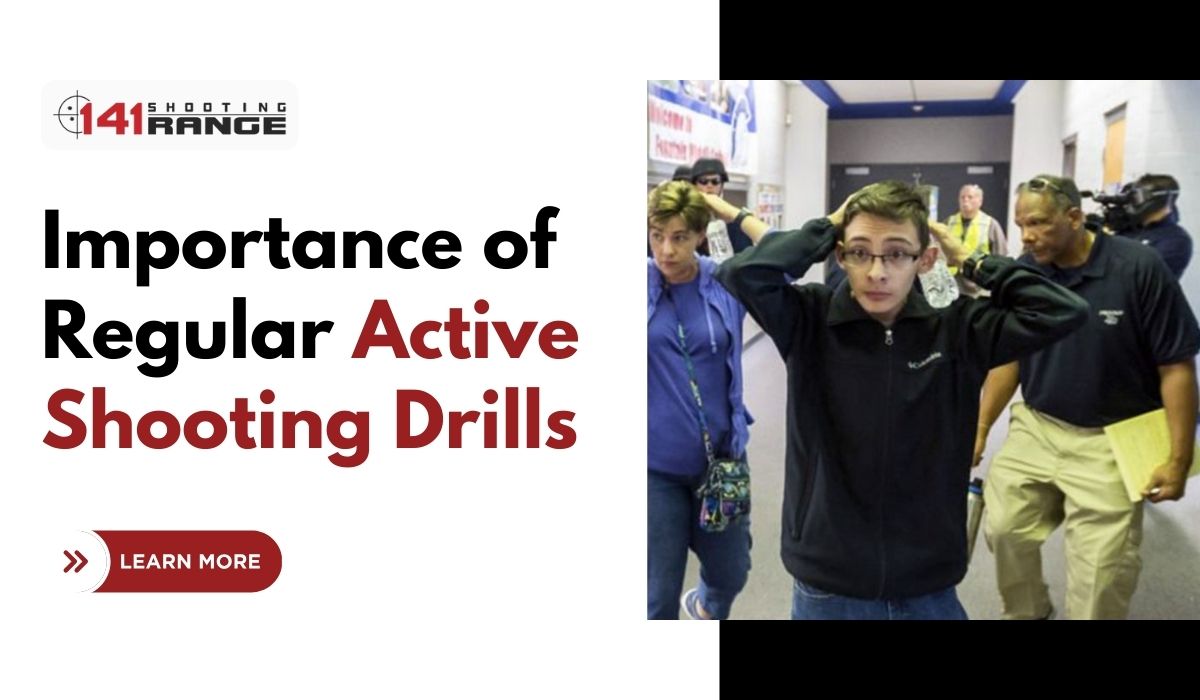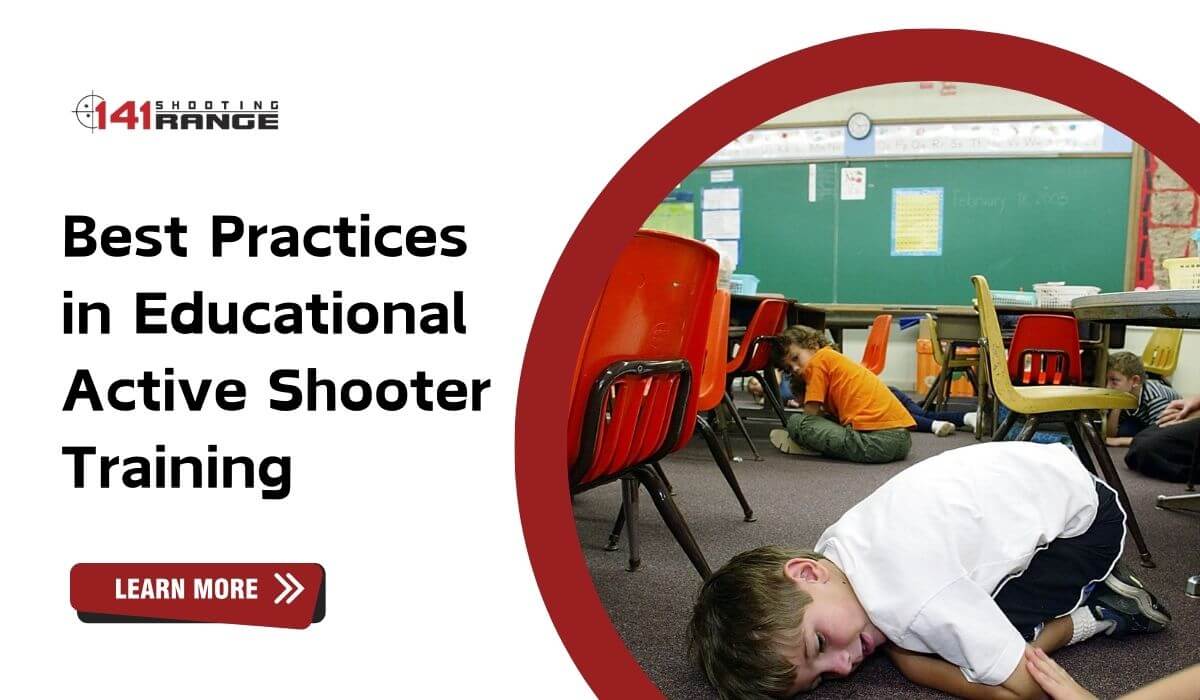Active shooter training programs are necessary for security and legal reasons when preparing for catastrophes. This blog examines the legal context of active shooter training, emphasizing organizations’ need to comply with laws.
Legal issues in these systems range from employment rules and privacy to scenario simulation realism and safety. As we discuss “Legal Considerations in Active Shooter Training Programs,” we realize that employee safety requires maintaining their rights and following regulations.
We clarify the legal necessity that influences workplace active shooter training program design, implementation, and refining.
Active Shooter Training and the Legal Imperative:
The legal imperative requires active shooter training programs to comply with legal requirements and regulations. The best thing you can do is get legal training. The importance lies in employee rights and safety as well as preparedness.
Every aspect of scenario simulation and communication protocol implementation must traverse the legal terrain. Recognizing the legal necessity emphasizes the commitment to an ethical and legal workplace that values security.
Complying with Employment Laws:
Compliance with employment regulations is essential for active shooter training programs to prioritize safety and legality. In addition to meeting legal requirements, these programs actively comply with employee rights and workplace safety standards.
These training programs indicate a proactive commitment to compliance by using active voice sentences. In this way, employees are ready for any danger and can feel confident of their legal obligations. Effective training and legal compliance create a workplace culture that values employee well-being and legal rights.
Keeping Scenario Simulations Realistic and Safe:
Legally, active shooter training programs must provide equal access and accommodation. Disability, language barriers, and various learning needs must be proactively addressed in training materials. This pledge is legal and essential to a safe and inclusive workplace.
Firms comply with regulatory requirements by recognizing and accommodating employees’ unique requests and contributing to workplace security. This strategy improves legal compliance and shows the company’s dedication to diversity, accessibility, and employee well-being.
Providing Equal Access and Accommodation:
Legal requirements require proactive actions to provide equitable access and accommodation in active shooter training programs. Employers must offer diversified worker training. This includes making training materials and simulations accessible to people with disabilities. Translated materials or interpreters are necessary to overcome language hurdles.
Employers should use alternative teaching methods to accommodate different learning types. Upholding these legal requirements promotes diversity and strengthens employers’ commitment to safe and equitable active shooter training for all employees.
Balancing Security and Privacy in Training:
Active shooter training poses privacy problems as it balances security and rights. Legal considerations highlight the careful balance required. Privacy laws protect employees from unauthorized intrusions, even during security training.
Training processes must carefully evaluate the information collected, saved, and disseminated to protect privacy. This involves protecting sensitive personal data and restricting access to training-related material. This balance ensures that the training program meets legal requirements and promotes a corporate culture that respects employee privacy.
Employee Participation and Liability Issues:
Responsibility problems in active shooter training programs are complex and require legal scrutiny. Training content might be a focus since inaccuracies or lack of can expose firms to legal issues. Training materials must be factual, current, and legal. Injury hazards during realistic scenario simulations pose liability concerns, necessitating businesses to develop safety procedures that limit risks without reducing training efficacy.
Employee participation, a cornerstone of readiness, adds liability scrutiny. Organizations must balance active engagement with respecting individual boundaries, assuring voluntary participation, and accommodating various requirements. Addressing these liability factors in active shooter training ensures a legal and secure training environment for corporations and personnel.
Establishing Clear Policies and Procedures:
Clear active shooter training policies and procedures are crucial to workplace safety and legal compliance. These policies outline employee rights, obligations, and expectations. Clarity in these directives improves readiness and reduces legal risks. It is important to clearly define employee roles, participation restrictions, and training goals during active shooter training. In a safe and legal workplace, everyone understands their role as part of this proactive strategy.
Legal Analysis of Communication Protocols:
Legal consequences require strict compliance with active shooter communication protocols. During crises, clear communication routes are not just excellent practice but also a legal requirement. Compliance with sensitive information transmission regulations protects individual rights and reduces liability. Communication methods must be legal to safeguard personnel and the company. From emergency notification to personal information protection, all active shooter communication must follow legal requirements, creating a secure and legally defensible response structure.
Reporting and Documentation After an Incident:
After an active shooter training incident, reporting and documentation are crucial legally. Accurate and complete records meet regulatory standards and help evaluate and improve training programs. It is important to document training situations, activities, and judgments. This detailed record helps ensure legal compliance and assists post-training assessments. These documents demonstrate a proactive approach to emergency preparedness. Providing post-incident reports and documentation helps organizations improve their active shooter training programs to comply with regulatory requirements.
Conclusion:
Finally, legal issues in active shooter training programs are essential for workplace security and compliance. Organizations reduce liability by following employment regulations, ensuring equal access, and balancing realism and safety. Clear policies, communication mechanisms, and robust documentation protect individual rights and legal standing.
Continuous compliance through training updates and evaluations shows a commitment to employee safety, well-being, and legal rights as the law changes. The legal necessity is the core of a robust and legally sound active shooter training program.
Frequently Asked Questions:
By adhering to legal compliance, training programs align with regulations, protecting employees and the organization.
Compliance with employee rights and workplace safety regulations requires aligned training practices.
Simulating scenarios requires balancing realism and safety, addressing potential legal implications, and prioritizing employee well-being.
Yes, equal access is a legal requirement, taking into account factors like disabilities, language barriers, and diverse learning needs.
In addition to training content, potential injuries, and making sure employee participation is legal, liability considerations should also be taken into account.
In addition to compliance with regulations, communication protocols play a crucial role in protecting sensitive information.
Continual legal compliance includes regular reviews, updates, and adaptations to evolving legal standards, demonstrating a commitment to employees’ safety and legal compliance.







